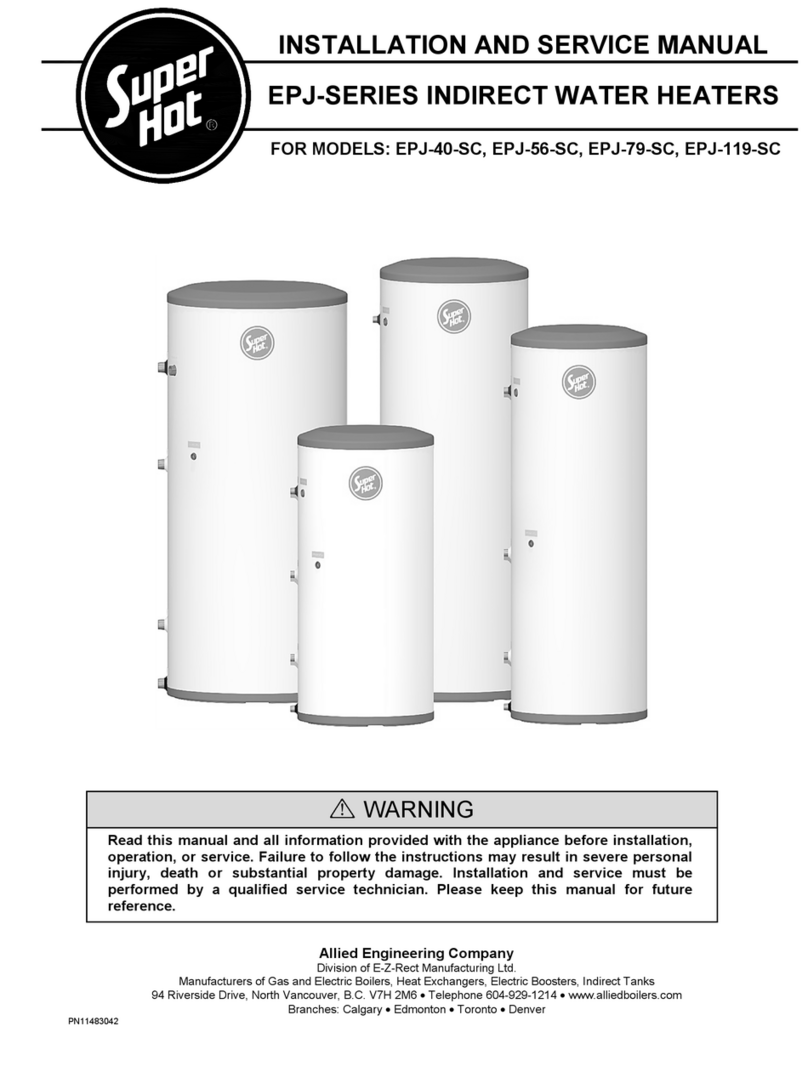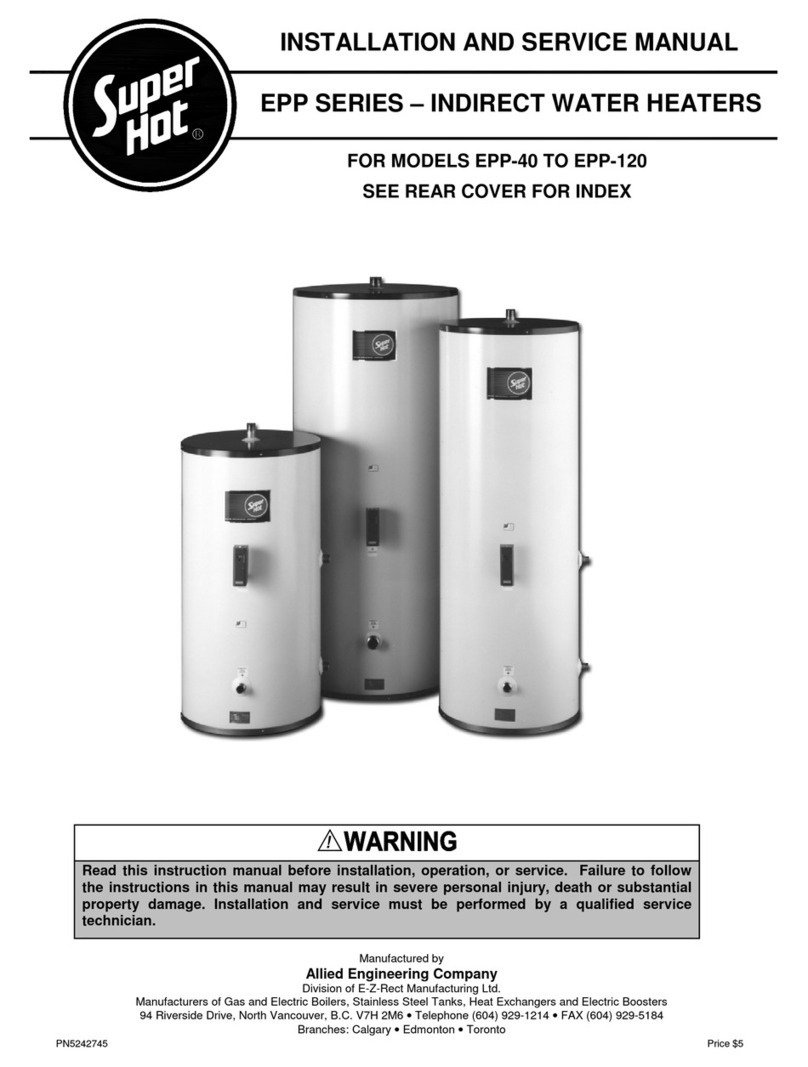
Electric Booster– Installation, Operating and Maintenance Instructions
6
2.6 T&P RELIEF VALVE PIPING
DANGER – RISK OF EXPLOSION
A T&P (temperature and pressure) relief valve must be installed to protect against excessive
temperature and pressure. Do not plug T&P relief valve or discharge piping. Plugging T&P relief
valve or discharge piping can cause excessive pressure, resulting in severe personal injury,
death or substantial property damage.
WARNING
The T&P valve may discharge pressurized hot water and/or steam. Steam exiting the discharge
outlet can explosively expand in any direction. Always maintain a safe distance from the
discharge pipe outlet in order to avoid potential contact with exiting hot water or steam.
Temperature and pressure settings of the T&P relief valve are factory set and are not adjustable. The T&P
valve must be of sized capacity to handle the maximum power of booster heater and not greater than the
operating restrictions stated on the rating plate of the booster heater and in this manual. Furthermore, the
service pressure should be at least 25 psi less than the setting stamped on the T&P relief valve.
Install the T&P relief valve directly into the T&P valve connection provided on the booster heater so that the
temperature sensing element is immersed in the water. No valve, reducing coupling or other restriction is
to be placed between the T&P relief valve and the booster heater connection. No valve, reducing coupling,
pipe plug, pipe cap or other restriction is to be placed in the discharge piping. Improper placement or piping
of the T&P relief valve can cause severe personal injury, death or substantial property damage.
The discharge line shall be installed to allow the complete drainage of both the valve and the line. It shall
be independently supported or arranged so as to avoid undue stress on the valve. Do not pipe in any area
where freezing may occur.
The termination of the T&P relief valve discharge line shall be downward and not directly connected to a
sewer line. The outlet of the discharge line shall terminate in the vicinity of a point of drainage within 6” of
the floor to eliminate potential risk of scalding and should terminate freely to atmosphere where any
discharge will be clearly visible and is at no risk of freezing.
2.7 WATER HAMMER
Water hammer is a damaging pressure shock wave created when the flow of water is suddenly stopped or
reduced (possibly induced by fast-closing faucet, reducing valve, or solenoid valve in a clothes/dishwashing
machine). This condition is commonly associated with hammering noises and vibrations; however, lack of
noise does not assure that water hammer is not present. Risers or air chambers do not provide protection.
To prevent damage to piping and the water heater: (1) install properly-sized water hammer arrestors at all
required locations and (2) adequately size pipes to ensure a maximum water velocity less than 5 ft/s.
2.8 FUNCTION OF PIPING ACCESSORIES
Shock Arrestor Expansion Tank:
Quick closing solenoid valves on the dishwasher will produce a shock pressure exceedingly high – up to
800 lbs. This may cause leaks in the plumbing and damage equipment such as relief valves, gauges, tank,
etc. The Shock Arrestor Expansion Tank provided with the booster heater must be installed.
Temperature and Pressure Indicating Gauge:
This gauge indicates the temperature and pressure and is useful when determining incoming water
temperature or adjusting the pressure reducing valve. It should be installed between the pressure reducing
valve and booster heater.
When a dishwasher is not equipped with a temperature gauge, a second gauge should be installed as close
to dishwasher as possible to verify 180ºF rinse temperature.





























